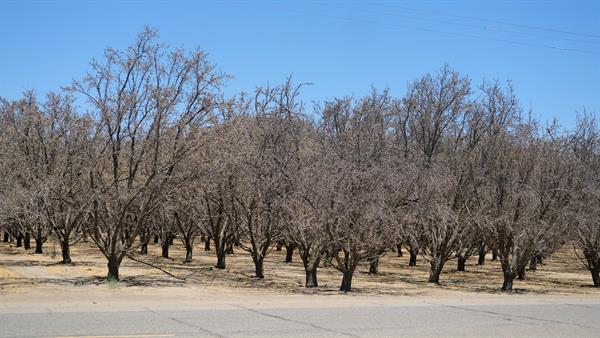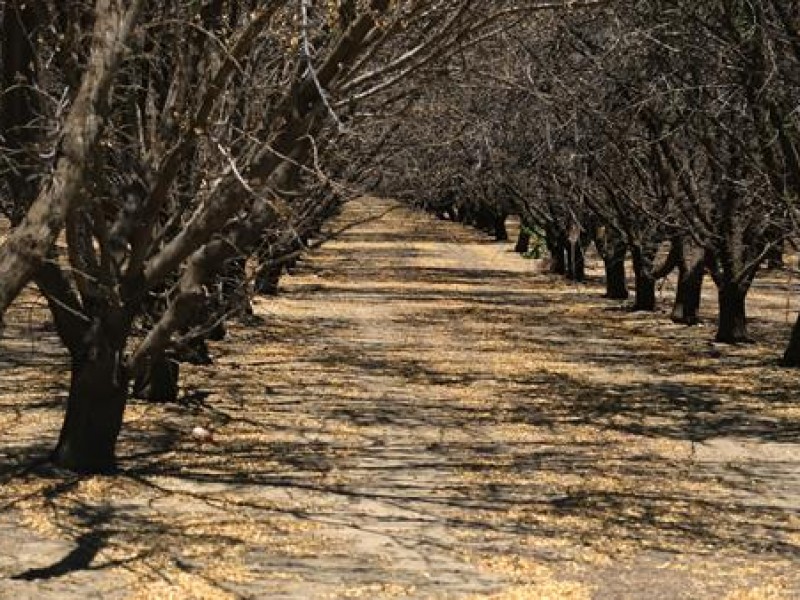Los Angeles (USA), Jul 16 (EFE).- California is suffering the worst drought in 1,200 years and 95% of its territory is at severe risk, an extreme situation generated by an explosive cocktail: climate change, a uncontrolled use of water and a crisis in the supply systems.
The families that live in this state located in the western United States are already suffering the consequences of the drought and the governor, Gavin Newsom, of the Democratic Party, has asked them to reduce domestic water consumption by at least 15%.
In the southern counties, fed by the now-rickety Colorado River and home to nearly half of Californians, there are places where you can only water one day a week or even none at all.
In addition, the agricultural industry is also impacted in one of the most important fruit and vegetable regions in the world. This season has left almost 200,000 hectares fallow, according to the latest report from the California Department of Food and Agriculture.
The drought will cause California’s agricultural sector as a whole to earn $1.2 billion less this year.
Experts, analysts and researchers agreed to refer to 1977 as the driest course in California in the last century, but the first 6 months of 2022 are marking a new milestone.
THE IMPACT OF CLIMATE CHANGE
“Now the cycles of drought and rain are longer due to climate change. We are in the third consecutive year without water, that is why it is so serious,” Samuel Sandoval, a professor at the University of California at Davis and a collaborator at the California Institute for Water Resources, explained to Efe.
A vision shared by the drought monitoring unit of the University of California (UCLA), from where they emphasize the importance of the fact that in 2022 it rained 30% less than recommended.
To this we must add that the volumes of snow received by the Sierra Nevada, the mountain range that functions as the backbone of California, have been drastically reduced in recent years.
“Snow takes time to melt, so when it’s in this state, it’s easier to store water and have it available to channel to drier places,” Sandoval detailed.
According to estimates from the California Department of Water Resources, some major reservoirs, such as those in Oroville or New Bullards (both in the northern half), are at half full at best.
For its part, most of the state’s aquifers are in a situation of water deficit and serious risk.

AGRICULTURE SUFFERS
Until now, the Mediterranean climate that California enjoys had allowed it to be an enclave, especially in the Central Valley area, with a very grateful land to grow and plant all kinds of fruits and vegetables such as melons, grapes, onions, lettuce or tomatoes. .
In fact, 95% of the tomatoes that are processed in the United States for the production of ketchup and other types of sauces come from California.
However, the star product of the region is undoubtedly the almond. 83% of these fruits that are consumed around the world come from the Central Valley, generating an economic impact of 9,000 million dollars, according to data from the Almond Board of California.
Due to the drought, this year more than 120,000 hectares of almond trees will not be planted.
Despite this, the California government considered for the second consecutive year that it did not have enough water to supply the farmers of the valley.
And it is that to the context of drought and the degradation of the reservoirs it is necessary to add that the state must comply with an environmental regulation that obliges it to dedicate 40% of the total water collected in its dams to feed the sea and the different rivers and California lakes.
From his farm near the city of Los Baños (Central Valley, California), agricultural businessman Joe del Bosque shows his discomfort with the Democratic administration for not providing him with irrigation water and having to leave hundreds of almond trees fallow this summer.
“We have to plan to combat climate change in the long term, but we have to do something to survive now,” the farmer told Efe emphatically.
Del Bosque’s position is common throughout the valley, whose crops are mostly guarded by huge anti-Newsom posters demanding that, in this drought situation, he not pour irrigation water into the sea.
In this sense, the president of the Almond Board, Richard Waycott, argued to Efe that “there were years with a lot of rain” in which more water could have been stored and “this drought could have been avoided.”
“We have been warning of this since 2009, in wet years the water was not conserved due to the risk of flooding and the lack of reservoirs,” said Waycott, who insisted on the relevance of building new dams for when “the rainy years return.”
Although farmers are not exempt from criticism either, and people from the cities criticize them for having invested in plantations such as almonds or avocados for being more economically profitable, knowing their high water consumption.
Some accusations that Del Bosque wanted to confront: “I can’t grow wheat or alfalfa if the state doesn’t supply me with water and I have to buy it from private distributors who quintuple its price. It’s unfeasible.”
Along these lines, Mike Wade, executive director of the California Farm Water Coalition, an organization that promotes the relationship between water for agricultural purposes and food supply, warned consumers of California fruit and vegetable products inside and outside the country in an interview with Efe. from the United States.
“They think it is a question of wanting to earn more money, but what is at stake is that one day they may go to the supermarket and they will not have tomatoes or almonds”he concluded.
–


